*NURSING > EXAM > APEA 3P Exam Prep- Nephrology/GU Questions with Correct Answers and Explanations (All)
APEA 3P Exam Prep- Nephrology/GU Questions with Correct Answers and Explanations
Document Content and Description Below
APEA 3P Exam Prep- Nephrology/GU Questions with Correct Answers and Explanations A 79-year-old female patient with urinary frequency is found to have a UTI. What medication could produce arrhythmias ... in her? Doxycycline Amoxicillin Ciprofloxacin Macrodantin Ciprofloxacin is a quinolone antibiotic. All quinolones have the potential to produce prolongation of the QT interval. It should be prescribed with caution in older adults. Mrs. Jackson complains of urinary incontinence when she laughs or sneezes. What should be used first line to treat her symptoms? Kegel exercises Prescribe oxybutynin Avoid caffeine and alcohol Minimize fluids at nighttime This patient has stress incontinence. The first-line approach with these patients is to attempt to strengthen the pelvic floor muscles. Appropriate performance of Kegel exercises is key. Prescribing an anticholinergic might worsen incontinence because it will cause urinary retention. Avoiding caffeine and alcohol is especially helpful for people with urge incontinence, but could have a minimal benefit for this patient. However, this does not address the underlying problem, weak pelvic muscles. Minimizing fluids at nighttime will help if nocturia is a problem. A 76-year-old male presents with urethral irritation after voiding. If sexually transmitted diseases and urinary tract infection are ruled out, what is another etiology? Acute bacterial prostatitis Chronic prostatitis Epididymitis Asymptomatic bacteriuria Chronic prostatitis can produce these symptoms. Sometimes this is accompanied by perineal pain, but the patient may have a normal prostate exam. Acute bacterial prostatitis patients will present with fever, chills. Examination of the prostate gland reveals a tender, boggy prostate gland. Epididymitis can produce scrotal pain, not dysuria or irritation with voiding. Asymptomatic bacteriuria is asymptomatic. These patients don’t know they have this because they have no symptoms. A healthy 32-year-old female has left flank pain and nausea. What is the most likely diagnosis? Urinary tract infection Renal stone Cholecystitis Pyelonephritis The most common presentation of acute uncomplicated pyelonephritis includes fever, flank pain, and nausea and vomiting. Sometimes patients present with symptoms of pelvic inflammatory disease (PID). In this presentation, abdominal pain is common too. Fever is so strongly correlated with acute pyelonephritis that it is unusual not to have fever. Renal stone patients may have this presentation, but fever is usually NOT present. It is unlikely that cholecystitis would present with left-sided flank pain. The gall bladder is on the right side of the body. [Show More]
Last updated: 2 years ago
Preview 1 out of 13 pages

Buy this document to get the full access instantly
Instant Download Access after purchase
Buy NowInstant download
We Accept:

Reviews( 0 )
$10.00
Can't find what you want? Try our AI powered Search
Document information
Connected school, study & course
About the document
Uploaded On
Oct 27, 2022
Number of pages
13
Written in
Additional information
This document has been written for:
Uploaded
Oct 27, 2022
Downloads
0
Views
50

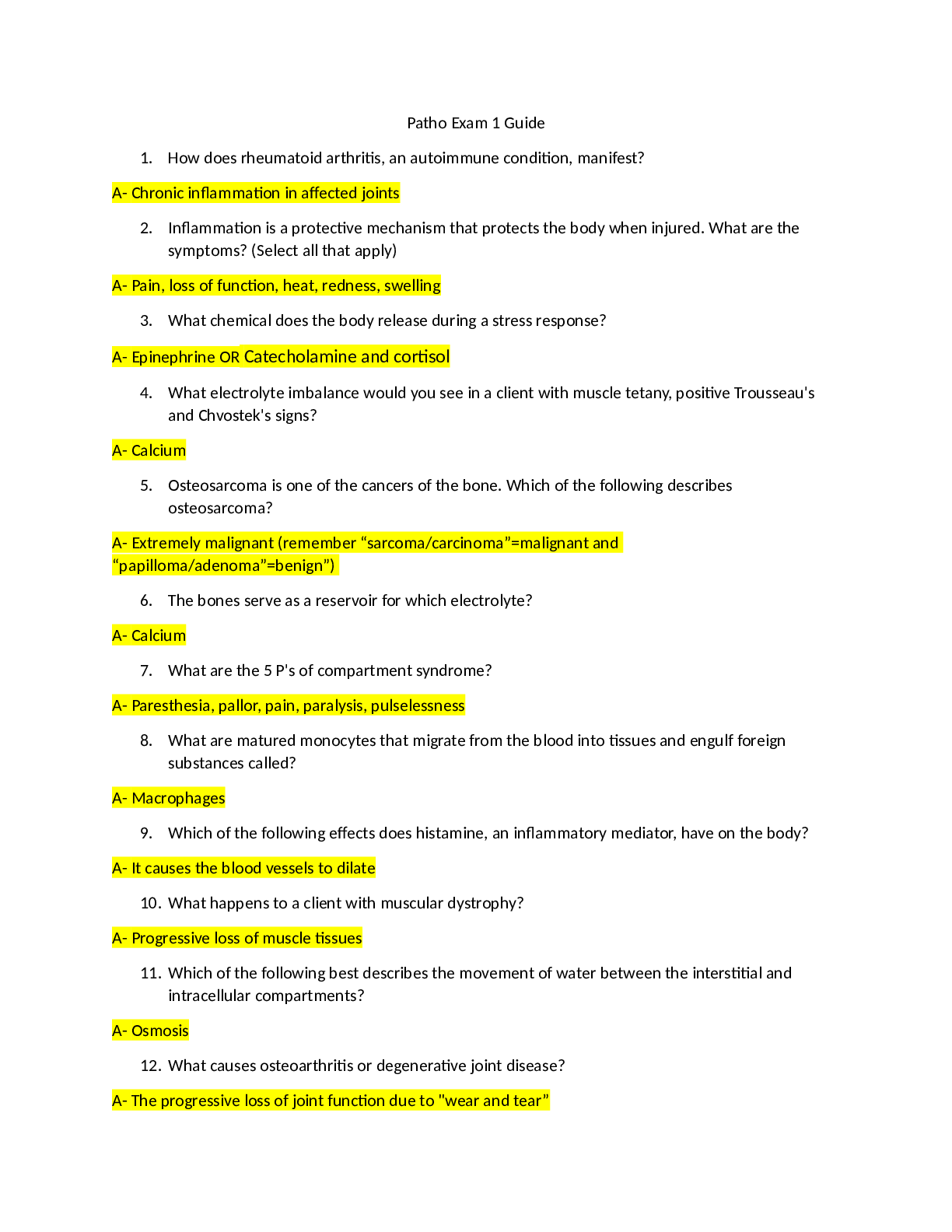
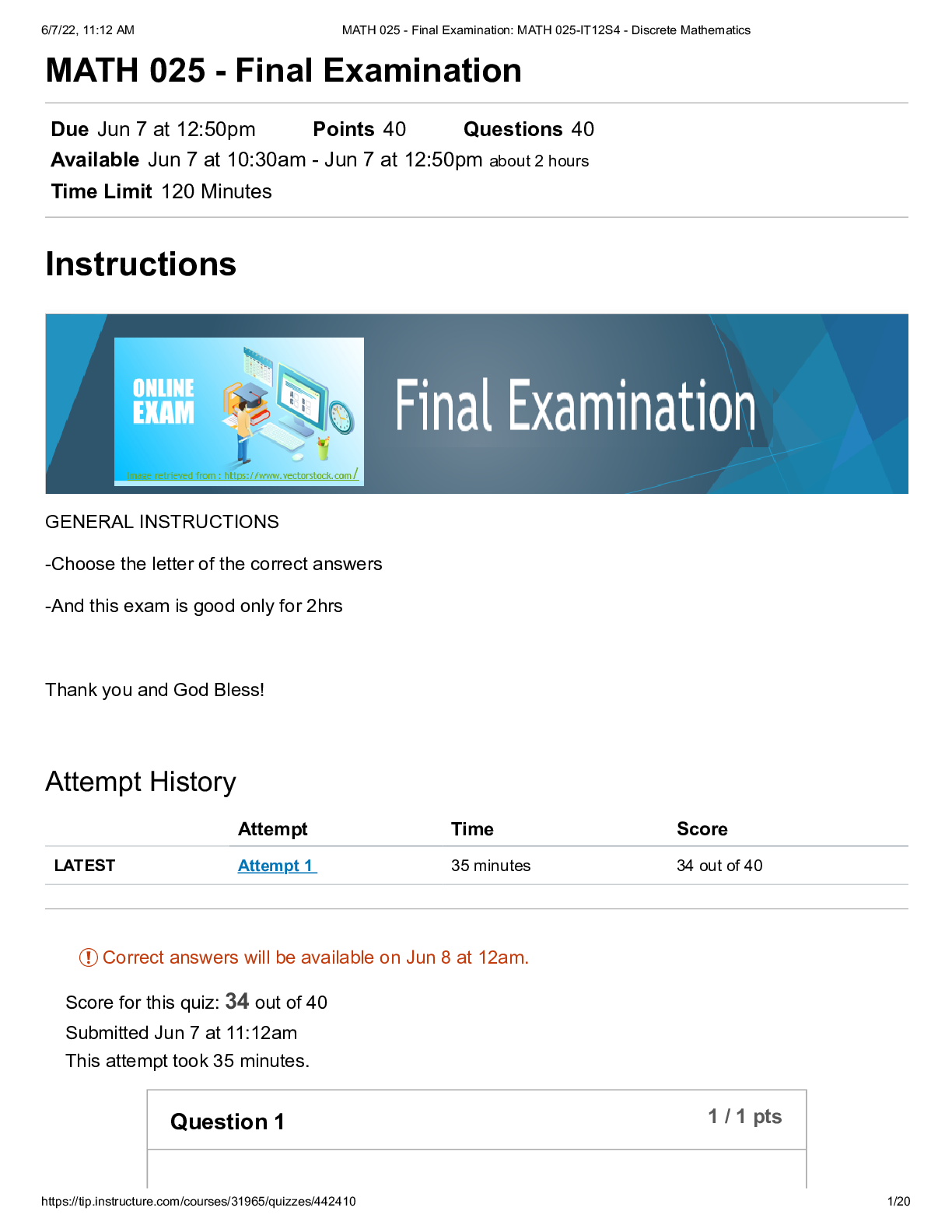
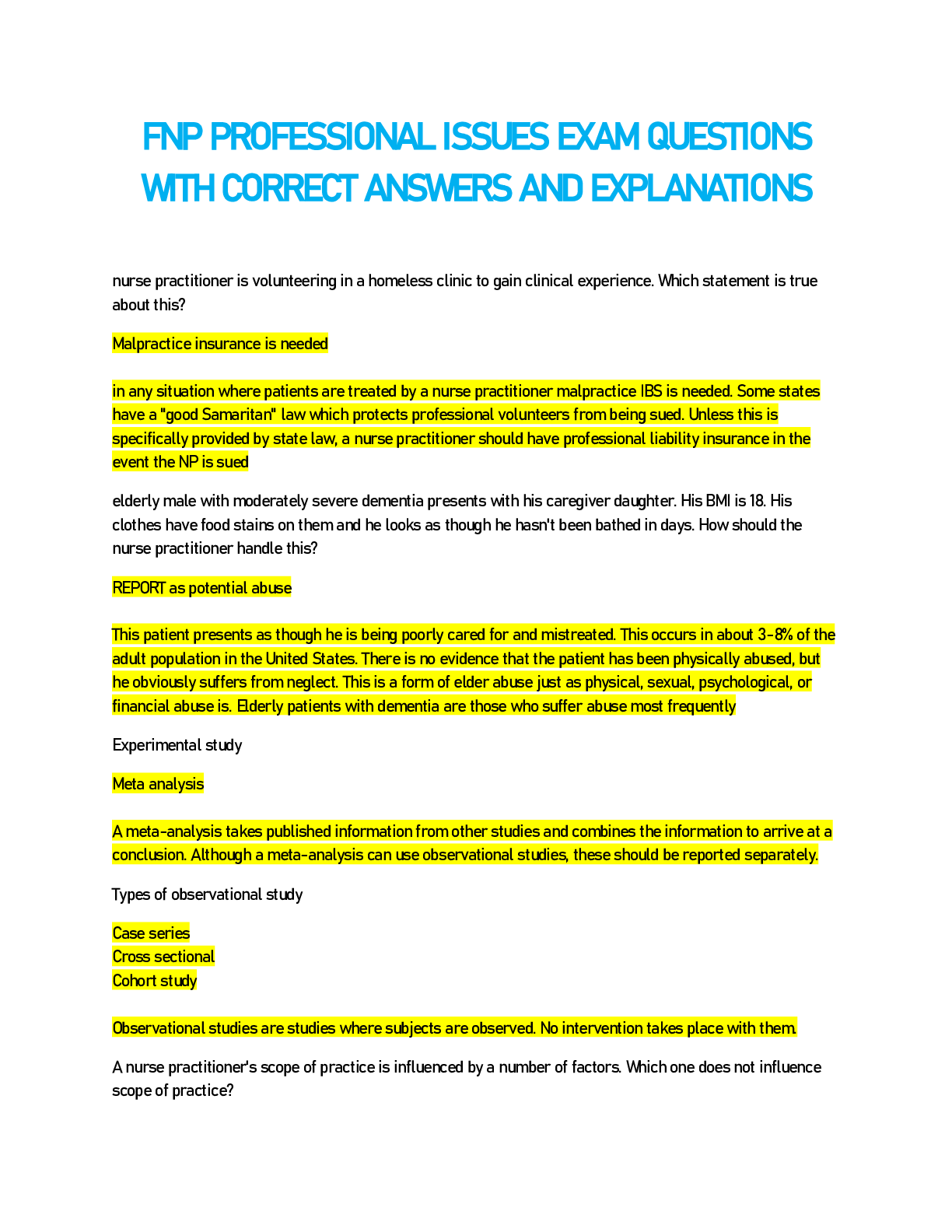

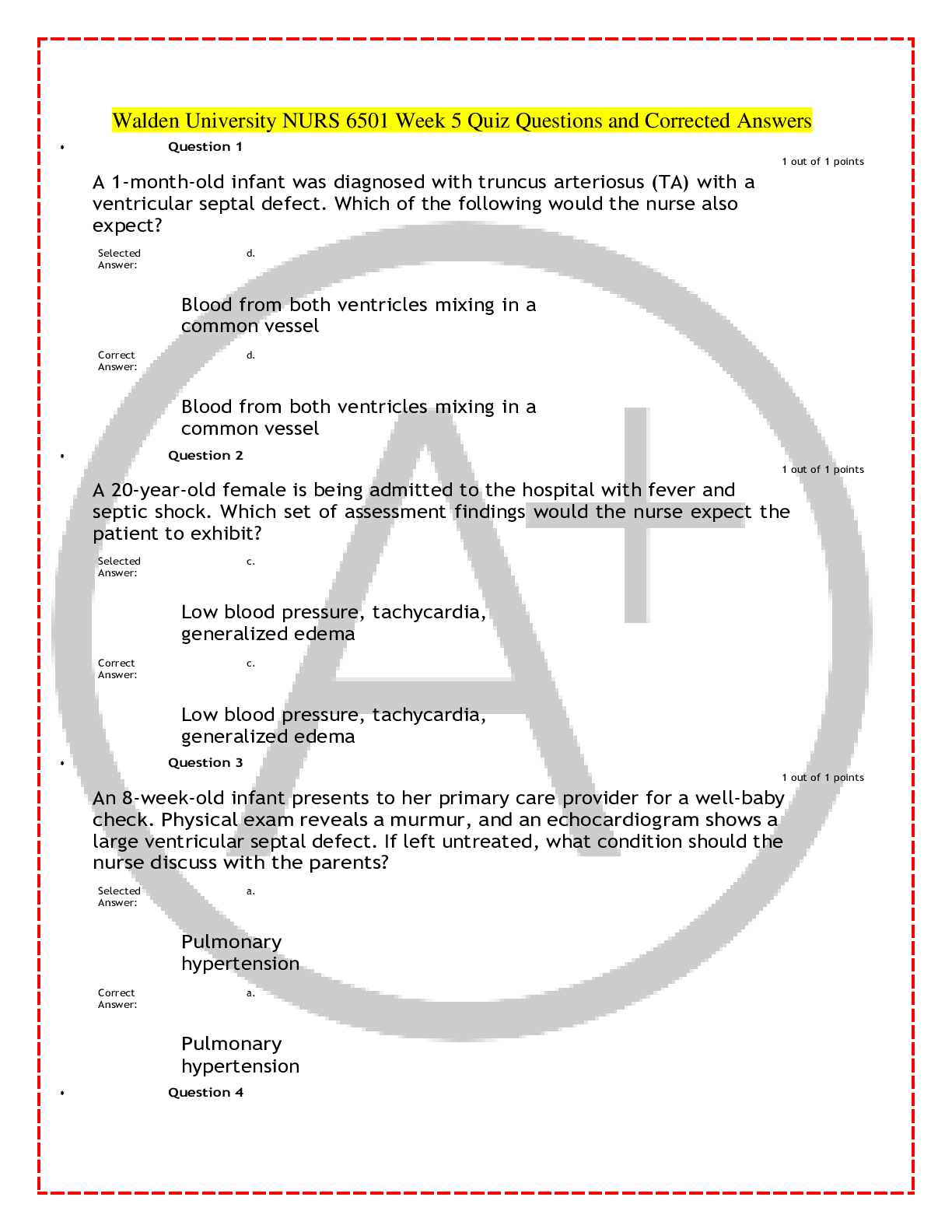
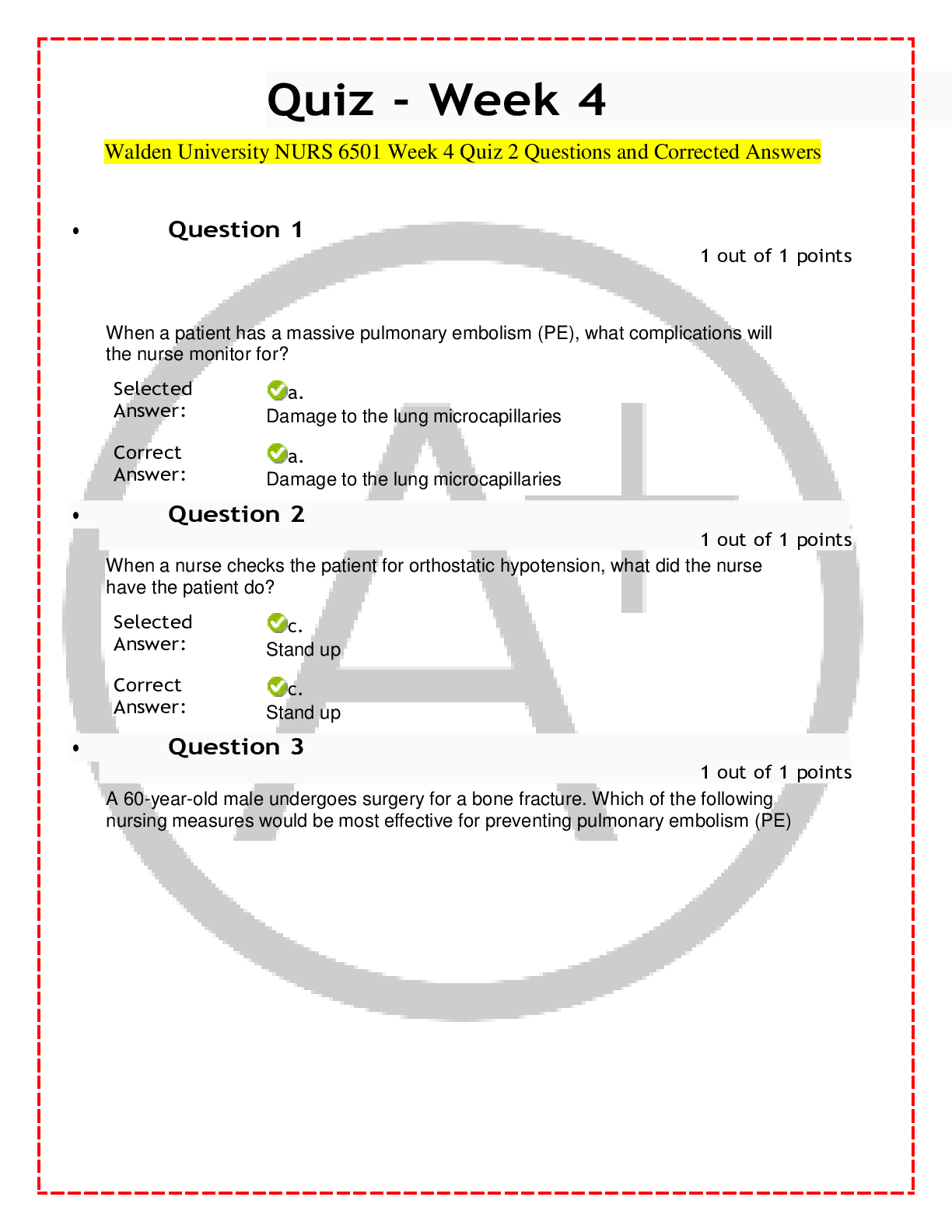
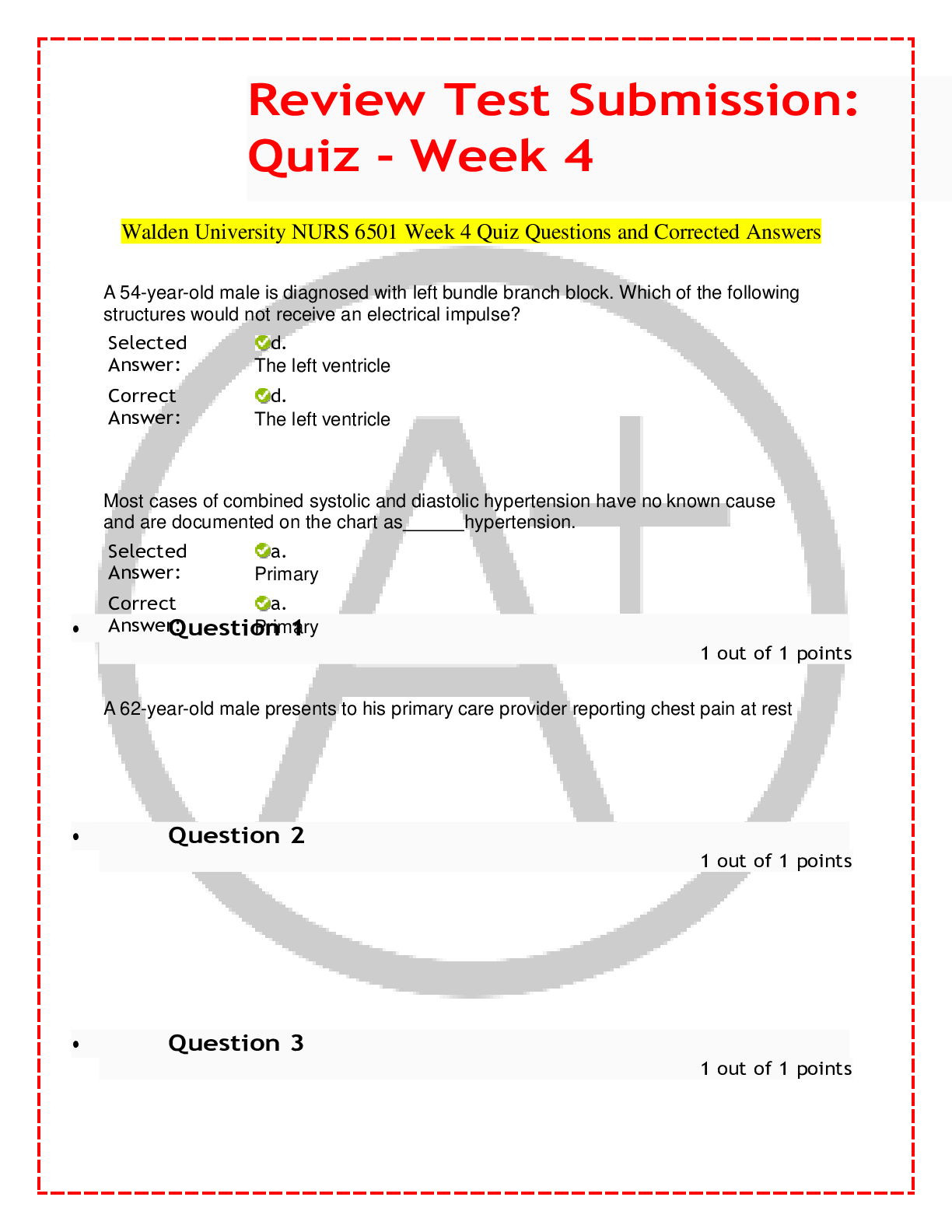
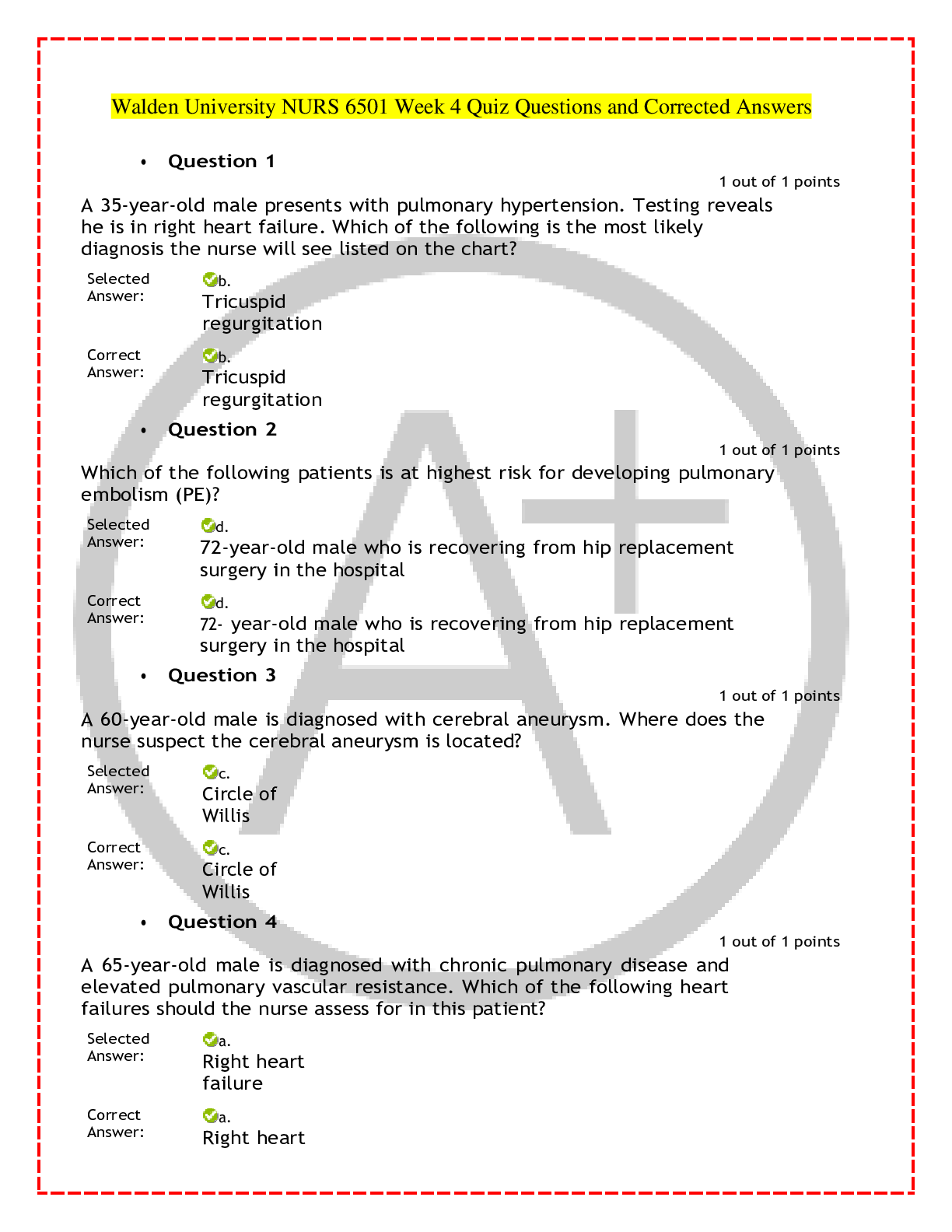

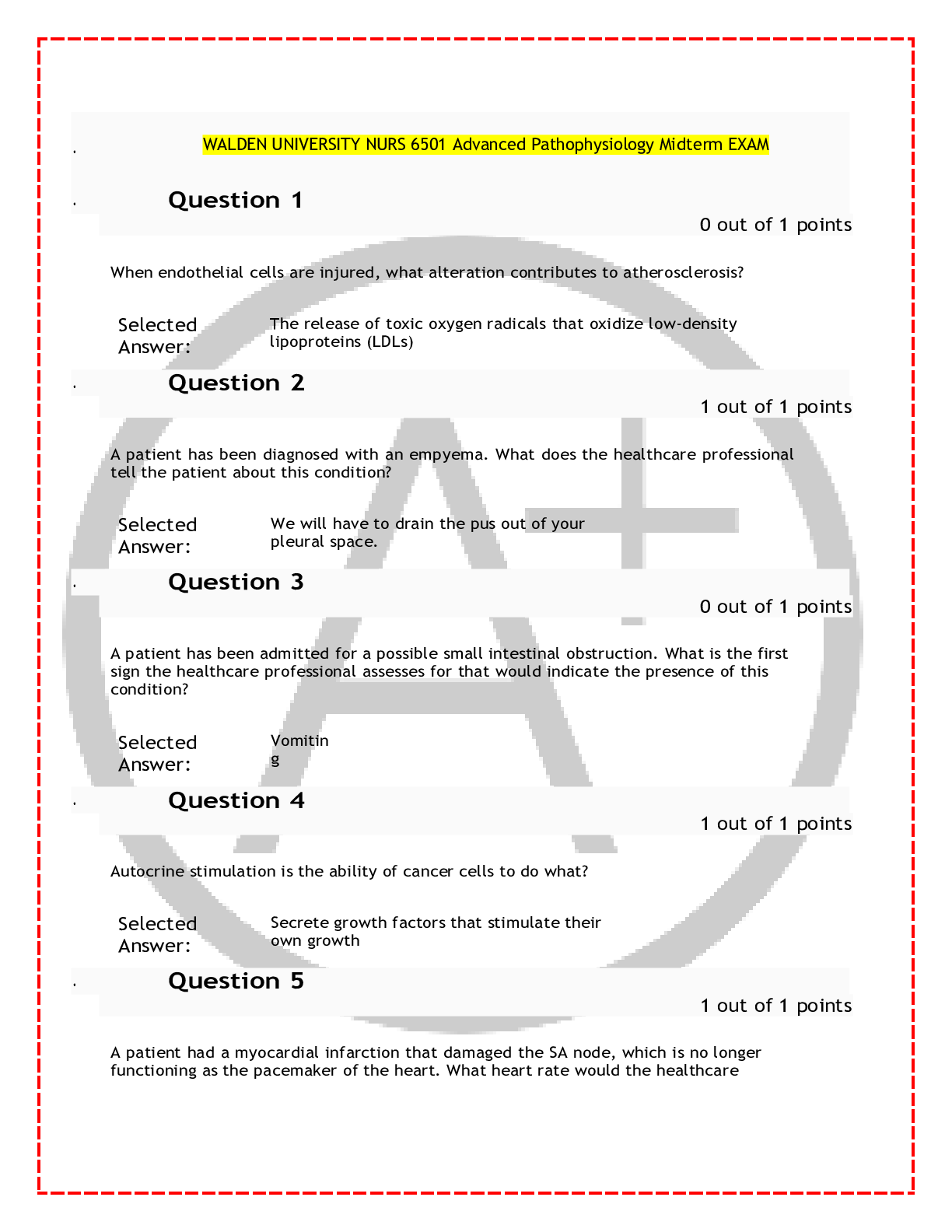







.png)
.png)
.png)
 – Chamberlain College of Nursing.png)
 – Chamberlain College of Nursing.png)
 – Chamberlain College of Nursing.png)
 – Chamberlain College of Nursing.png)

